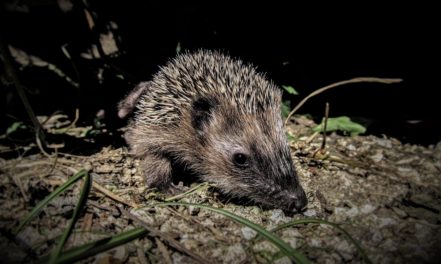
Hedgehogs
It is not known exactly how many of these spine-backed, small, hibernating mammals there are in the UK, but the estimate is one million. It is also thought that this is a drastic reduction from the hedgehog population of fifty years ago, at around 30 million. The vast majority live in England and they avoid being counted as they are nocturnal and generally sleep in a different hidey-hole every day of their active period from March to November.
British hedgehogs are of the Erinaceus-West European type, which can grow up to 1ft. long, with a little tail, 4-inch legs and approximately 6,000 spines an inch long. These spines are like tough bristles, comprising the same fibrous proteins as are in human nails and hair.
Hedgehogs feed on insects, snails, worms, beetles, caterpillars, slugs, baby birds, rodents and frogs. This tends to make them the gardener’s friend. Preservation societies encourage gardeners to reciprocate by making their plots hedgehog-friendly, with unobtrusive holes at the bottom of boundary fences and piles of logs and leaves in a wilderness corner. This enables hedgehogs to roam from garden to garden, as they like to do, and avoid the dangers of electric gardening tools and bonfires.
(Image: needpix.com / Public domain)
